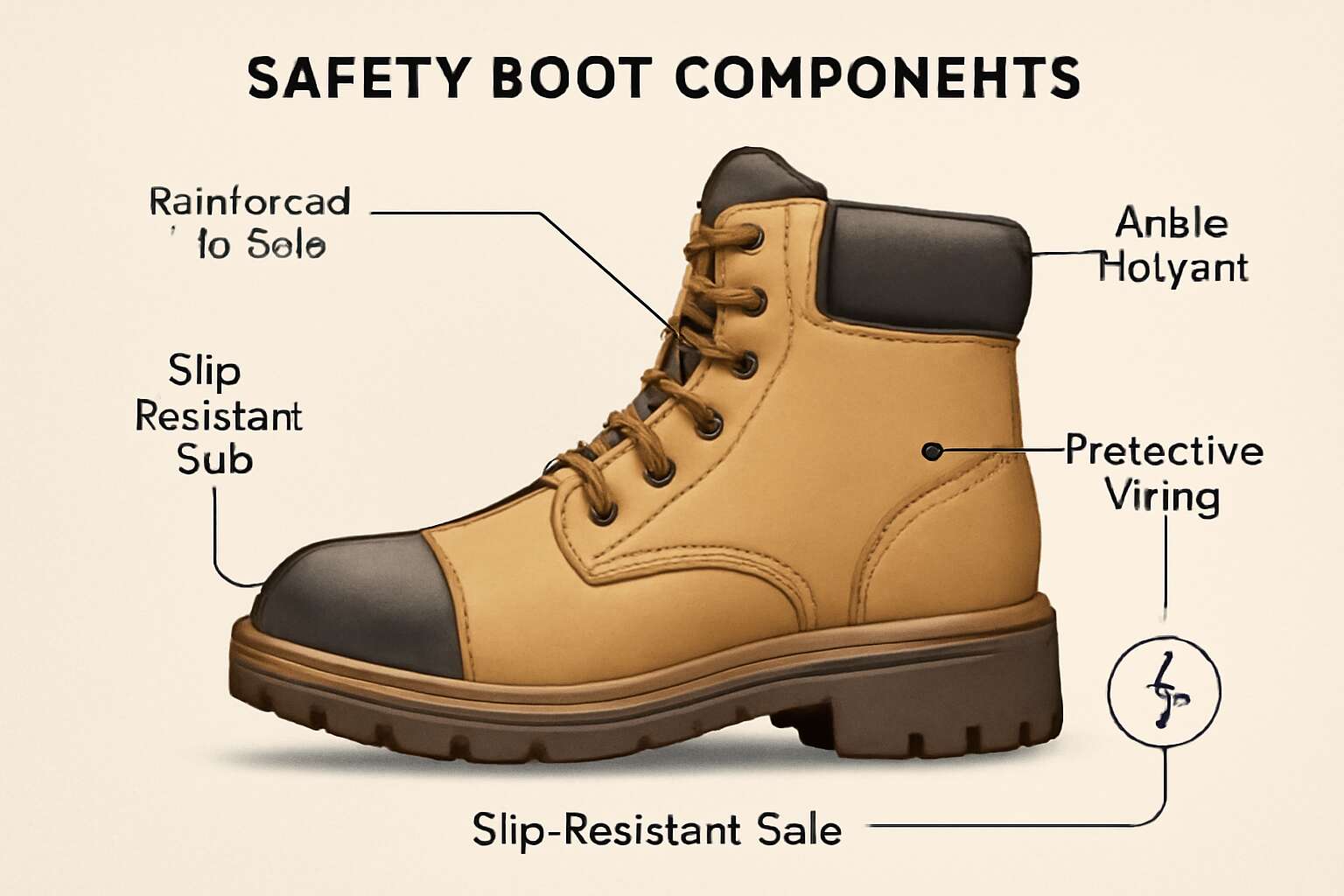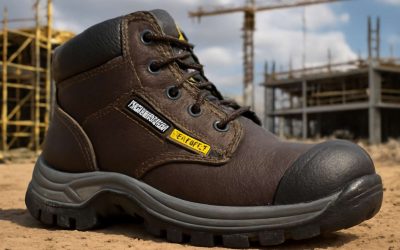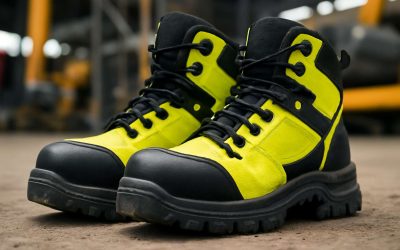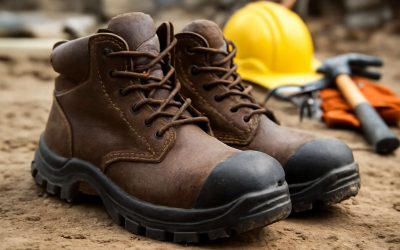Understanding Safety Boots
Features and Functions – Overview of safety features incorporated in safety boots
Safety boots are far more than just sturdy footwear; they are a meticulously engineered fortress for your feet. According to recent industry insights, a well-designed safety boots diagram can highlight up to fifteen distinct features that serve both protective and ergonomic purposes. These features are the silent guardians against workplace hazards, often overlooked yet critically vital.
Take a moment to marvel at the variety of safety features embedded within modern safety boots. From reinforced toe caps to slip-resistant soles, each element plays a pivotal role in ensuring safety and comfort. A comprehensive safety boots diagram reveals these intricate details, allowing users to understand how each component functions harmoniously to combat specific risks.
Typically, safety boots incorporate elements such as steel or composite toe protection, puncture-resistant soles, and insulation against extreme temperatures. Here’s a quick overview:
- Impact-resistant toe caps for crushing protection
- Slip-resistant tread patterns to prevent falls
- Waterproof membranes for durability in wet conditions
- Electrical hazard protection for live wire contact
By visualizing these features through a detailed safety boots diagram, workers can appreciate the sophisticated harmony of safety and comfort woven into each pair. It’s truly a marvel how these features work in tandem to keep hazards at bay—proof that innovation and safety go hand in hand in every step taken.
Importance of Proper Safety Gear – Why safety boots are essential in hazardous work environments
In the realm of hazardous work environments, where danger lurks around every corner like a mythical beast waiting to strike, the importance of proper safety gear cannot be overstated. Safety boots serve as the enchanted armor that shields workers from unseen threats—each pair a fortress for the feet, crafted with purpose and precision. Recent industry data reveals that accidents involving foot injuries account for nearly 30% of workplace incidents, underscoring the critical need for reliable protection.
Visualizing this vital equipment through a comprehensive safety boots diagram reveals a tapestry of intricate features—each element a safeguard against specific hazards. From impact-resistant toe caps to slip-resistant soles, every component works harmoniously to create an unbreakable barrier. For those who venture into rugged terrains or volatile factories, understanding the nuanced design of safety boots elevates safety from mere compliance to a true art form.
In environments where electrical hazards, wet conditions, and heavy objects threaten daily, the significance of these specialized boots becomes evident. They are not just footwear but a mythic shield forged in innovation, essential for protecting lives and ensuring that every step taken is a step toward safety and security.
Components of a Safety Boots Diagram
Protective Elements – Toe caps, sole reinforcement, and puncture protection
Within the intricate maze of a safety boots diagram lies the secret to safeguarding workers in some of the most perilous environments. Every component plays a crucial role—like silent guardians—designed to shield against unpredictable hazards. The toe caps, often reinforced with steel or composite materials, act as the first line of defense against falling objects, while sole reinforcement ensures stability and durability on uneven surfaces. But there’s more beneath the surface—puncture protection layers embedded in the sole prevent sharp objects from breaching the boot’s integrity.
Understanding these protective elements is vital. A typical safety boots diagram highlights:
- Toe caps for impact resistance
- Sole reinforcement for stability and durability
- Puncture protection layers to prevent injuries from sharp objects
Each feature, meticulously integrated into the design, transforms ordinary footwear into a formidable barrier against workplace hazards, revealing the true importance of a well-constructed safety boots diagram in occupational safety.
Support Structures – Ankles, heel support, and arch support
Within the intricate framework of a safety boots diagram lies the delicate artistry of support structures—hidden yet vital. These components cradle the foot in a ballet of stability, ensuring every step is confident and secure amidst the chaos of hazardous environments. The ankles, often overlooked, are fortified with specialized support that prevents sprains and twists, acting as the silent guardians of mobility.
Equally crucial is the heel support, which absorbs shock and maintains proper alignment, reducing fatigue over long shifts. Arches, the natural arch of the foot, are reinforced through innovative design, offering a resilient foundation that withstands the relentless pounding of uneven terrain. These elements work in harmony, transforming protective footwear from mere safety gear into a meticulously engineered marvel.
- Support for ankles to prevent injuries
- Heel reinforcement for shock absorption
- Arch support to maintain natural foot alignment
Understanding these support structures within the safety boots diagram illuminates the profound craftsmanship behind occupational footwear. Every curve, every reinforced layer is a testament to the pursuit of both safety and comfort—an essential harmony for those who walk the tightrope of danger each day.
Safety Materials – Kevlar, steel, composite materials
Safety boots are more than just rugged footwear; they’re a complex engineering marvel designed to protect workers in hazardous environments. When examining a safety boots diagram, you’ll notice the intricate layers and components that work tirelessly to keep you safe on the job. One of the most critical aspects is the choice of safety materials—Kevlar, steel, and composite materials—that form the backbone of these formidable boots.
Kevlar, renowned for its tensile strength, often lines the upper parts and laces, offering cut and abrasion resistance without adding weight. Steel is the classic hero — found in toe caps and soles for puncture protection and durability. Meanwhile, composite materials provide a lightweight alternative, combining strength with comfort, especially in environments where metal detectors are a concern.
Understanding the safety boots diagram helps reveal how these materials are strategically layered to deliver maximum protection. For instance, steel reinforcements provide that reassuring crunch when stepping onto sharp objects, while Kevlar ensures the boot remains lightweight, flexible, and resilient. This sophisticated interplay of components and materials makes occupational safety footwear a true marvel of modern craftsmanship—crafted for the tough and unforgiving terrains of South African workplaces.
Additional Features – Slip resistance, waterproofing, insulation
When dissecting a safety boots diagram, it becomes evident that these seemingly simple pieces of footwear are a marvel of meticulous engineering. Beneath their rugged exterior lie layers of innovation, each serving a purpose as vital as a secret handshake. Among these, additional features like slip resistance, waterproofing, and insulation elevate safety boots from mere workwear to essential armor for the South African laborer. These elements are often overlooked, yet they play a starring role in ensuring workers stay upright and dry, even in the most treacherous conditions.
Slip resistance, for example, is achieved through specialized tread patterns and rubber compounds designed to grip slippery surfaces with unwavering tenacity. Waterproofing, on the other hand, employs membrane linings that repel water while allowing moisture escape—think of it as a waterproof suit for your feet. Insulation, often overlooked, protects against extreme temperatures, making sure workers remain comfortable whether battling the scorching sun or the chill of underground tunnels.
In fact, a typical safety boots diagram might include components such as:
- Anti-slip soles with deep treads
- Waterproof membranes integrated into the upper layers
- Thermal insulation layers for cold environments
Each feature is seamlessly integrated, creating a cohesive whole that ensures maximum occupational safety while maintaining the comfort and flexibility workers demand. It’s a delicate dance of design and durability—proof that safety boots are anything but ordinary footwear. Instead, they are a carefully balanced blend of protection, resilience, and practicality, crafted to meet the rigorous demands of South African workplaces.
Types of Safety Boots and Design Variations
Work Environment Specific Boots – Construction, industrial, electrical safety boots
In the realm of occupational safety, the variety of safety boots is as diverse as the challenges faced on the worksite. Each work environment demands a tailored approach, with specific design variations that cater to the unique hazards encountered. A comprehensive safety boots diagram reveals the intricate layers of protection, from reinforced toes to specialized soles. These variations are not merely aesthetic; they are meticulously engineered to ensure durability and safety in demanding conditions.
For construction sites, rugged safety boots with steel toe caps and slip-resistant soles dominate the landscape. Industrial settings often require boots with reinforced midsoles for puncture resistance, while electrical safety boots feature non-conductive materials to prevent electrical shocks. Each category exemplifies how design variations are vital, providing workers with the confidence to perform their duties amidst hazards. Indeed, understanding these distinctions through a detailed safety boots diagram can be life-saving, illuminating the specific safety features that align with each work environment.
Design Differences – High-cut vs. low-cut, lightweight vs. heavy-duty
Safety boots come in a dazzling array of styles, each designed to tackle specific hazards of the workplace. Did you know that the choice between high-cut and low-cut safety boots can significantly influence your agility and ankle protection? A well-crafted safety boots diagram reveals these design variations, helping workers understand the subtle differences that can make or break safety on site.
High-cut safety boots offer superior ankle support, ideal for rough terrains or uneven surfaces, while low-cut options provide greater mobility and ventilation. When it comes to weight, lightweight safety boots are perfect for those who need to move quickly without sacrificing safety, whereas heavy-duty models with reinforced soles and toe caps are the stalwarts of durability. The key is balancing comfort with protection — a principle clearly illustrated in a detailed safety boots diagram, guiding you to the perfect fit for your work environment.
Interpreting a Safety Boots Diagram
Legend and Symbols – Understanding standard symbols and color codes
Understanding a safety boots diagram is essential for anyone working in hazardous environments. These diagrams use standard symbols and color codes that quickly convey critical information about the boots’ protective features. Recognizing these symbols ensures you select the right safety boots for your specific work environment, whether it’s construction, electrical work, or industrial settings.
Most safety boots diagram legends include universally accepted symbols such as a toe cap icon indicating steel or composite protection, or a puncture-resistant sole symbol. Color codes often highlight special features: red might denote electrical hazard protection, while blue indicates waterproofing. Familiarity with these visual cues can significantly reduce the risk of accidents.
To interpret a safety boots diagram effectively, focus on the legend — the key that explains each symbol and color. This straightforward reference helps you quickly assess whether a pair of safety boots meets your safety requirements, ensuring optimal protection on the job site. Safety boots diagram legends are designed with clarity, making complex safety features accessible to everyone in the workforce.
Labeling and Annotations – Deciphering labels for different components
Interpreting a safety boots diagram label involves more than just glancing at symbols and colors; it’s about decoding a visual language designed for quick, clear communication. Each component of the diagram is annotated with precise labels that specify the safety features embedded within the boots. These labels often include abbreviations or icons that indicate specific protective elements, such as steel toe caps or puncture-resistant soles. Recognizing these annotations ensures workers can swiftly identify whether a pair of safety boots aligns with their unique safety requirements.
In many cases, the safety boots diagram will feature an array of detailed markings. For example, labels might specify the type of sole reinforcement, the presence of waterproofing, or thermal insulation. Carefully examining these annotations allows for a comprehensive understanding of the boots’ capabilities. When you encounter a safety boots diagram, pay close attention to these labels — they are the key to understanding the full suite of protective features at a glance.
Some diagrams incorporate numbered or bulleted lists within their annotations, which help clarify complex features. For instance:
- Toe cap protection: indicated by a specific icon or abbreviation
- Puncture resistance: highlighted with a symbol denoting reinforced soles
- Waterproofing: marked with a blue color code or water droplet icon
Deciphering these labels with precision ensures that safety boots chosen for construction, electrical work, or industrial environments offer the right level of protection. The clarity of a well-designed safety boots diagram makes it easier for workers to make informed decisions, ultimately enhancing safety on every job site.
Diagram Types – Technical diagrams, illustrative diagrams
Interpreting a safety boots diagram can feel like deciphering an ancient scroll—except instead of hieroglyphics, you’re faced with symbols, icons, and color codes that speak a universal language of protection. Whether you’re shopping for construction safety boots or electrical hazard gear, understanding the different diagram types is essential. Technical diagrams tend to be precise and detailed, often including measurements and standardized symbols recognized across industries. On the flip side, illustrative diagrams lean into clarity, using vivid visuals to demonstrate features like waterproofing or slip resistance, making them perfect for quick comprehension.
Some diagrams incorporate numbered annotations or bulleted lists to highlight key protective elements, such as:
- Toe cap protection: symbolized by a shield icon
- Puncture resistance: marked with a reinforced sole symbol
- Waterproofing: indicated by a water droplet icon
Recognizing these diagram types and their unique features ensures that workers can quickly identify whether a pair of safety boots meets their specific safety requirements. So, next time you encounter a safety boots diagram, remember—it’s more than just a picture; it’s a coded blueprint for safety that demands your keen eye and a dash of interpretive flair.
Benefits of Using a Safety Boots Diagram
Selection Aid – Helping consumers choose the right safety footwear
In the bustling realm of hazardous workplaces, a safety boots diagram becomes an invaluable compass guiding workers towards footwear that offers unwavering protection. Imagine navigating a labyrinth of dangers—slippery surfaces, sharp objects, electrical hazards—and having a detailed map to choose the perfect safety boots tailored to each challenge. This visual aid transforms complex specifications into a clear, intuitive understanding, empowering consumers to make confident choices.
By leveraging a safety boots diagram as a selection aid, workers can effortlessly compare features such as toe cap strength, puncture resistance, and slip resistance. The diagram acts as a visual lexicon, decoding symbols and labels that might otherwise seem arcane. For instance, it highlights the importance of selecting waterproof, electrical safety boots for electrical environments or lightweight options for prolonged wear in construction zones. Such clarity ensures that every step taken on-site is grounded in safety and precision, turning what could be an overwhelming process into an informed, strategic decision.
Maintenance and Inspection – Guidance on inspecting components for wear and tear
In the demanding world of hazardous work environments, ensuring safety isn’t just about wearing the right gear—it’s about understanding it thoroughly. A safety boots diagram acts as a vital visual tool that simplifies complex safety features, making it easier for workers to recognize and inspect their footwear effectively. This diagram provides a clear overview of various components, from toe cap protection to slip-resistant soles, all in one accessible image.
Using a safety boots diagram as part of your maintenance routine enhances the ability to spot signs of wear and tear early. Workers can quickly identify issues like weakened toe caps or compromised puncture resistance, preventing accidents before they happen.
- Cracked or deformed soles
- Worn-out tread patterns
- Loose or damaged reinforcements
Regularly consulting the diagram ensures safety boots remain in optimal condition, safeguarding lives on the South African construction sites and industrial zones. It’s a strategic, visual approach that promotes longevity and peak performance of essential safety footwear.
Design and Innovation – Designers and manufacturers using diagrams for product development
In the intricate realm of safety footwear, innovation often begins with a simple sketch—a safety boots diagram that serves as a blueprint for excellence. These visual representations are not mere drawings; they are the foundation upon which designers craft footwear that marries function with durability. By harnessing detailed diagrams, manufacturers can visualize complex features such as reinforced toe caps, slip-resistant soles, and waterproof membranes, ensuring each element seamlessly integrates into the final product.
Designers utilize safety boots diagram to pioneer new materials and structural enhancements, transforming traditional safety boots into marvels of engineering. This process enables them to anticipate potential weaknesses and refine components before production, significantly reducing costly errors. Moreover, a well-crafted safety boots diagram acts as an invaluable communication tool, bridging the gap between technical teams and end-users, fostering clarity and precision in the development cycle.
In the fiercely competitive landscape of safety footwear, innovation driven by detailed diagrams accelerates the creation of specialized boots tailored for specific work environments—be it construction, electrical work, or industrial zones. The strategic application of safety boots diagram ensures that every pair is crafted with purpose, elevating safety standards and empowering workers to perform their duties with confidence and protection. Truly, these diagrams are a testament to how visionary design can forge a safer, more resilient future for those working in hazardous conditions across South Africa and beyond.
Keywords and SEO Optimization Tips for Safety Boots Diagram Content
Using Long-Tail Keywords – Incorporating related keywords like ‘safety boots features diagram’
In the intricate world of protective footwear, a well-crafted safety boots diagram serves as a vital compass for both manufacturers and end-users. Understanding the nuances of a safety boots diagram can unlock insights into the vital safety features embedded within each pair, ensuring optimal protection in hazardous environments. When exploring a safety boots diagram, it’s essential to pay attention to the detailed illustrations of safety boots features diagram, which highlight key components like toe caps, puncture-resistant plates, and slip-resistant soles.
By integrating related keywords such as ‘safety boots features diagram’ and ‘safety boots diagram,’ content can naturally enhance its SEO performance. For example, describing the different types of diagrams—technical versus illustrative—can help target specific search intents while enriching the reader’s understanding. Remember, precise labeling and annotations within these diagrams serve as a guide for selecting the right footwear, especially in specialized work environments like construction or electrical safety zones. Ultimately, a comprehensive safety boots diagram is more than just a visual aid; it’s a strategic tool that empowers users to make informed decisions about their safety gear.
Optimizing Image Alt Text – Descriptive alt tags for safety boots diagram images
In the realm of occupational safety, visual aids are king, and nothing screams clarity like a well-crafted safety boots diagram. When navigating the labyrinth of protective footwear, a detailed safety boots diagram becomes an indispensable tool, illuminating the labyrinthine safety features embedded within each pair. But here’s the kicker: the true power lies in optimizing how these diagrams are presented online. Enter the art of SEO—specifically, the magic of descriptive image alt text.
Properly crafted alt tags for safety boots diagram images do more than just boost your website’s visibility—they serve as a vital bridge for search engines to understand what’s depicted. Instead of vague descriptions, aim for precise, keyword-rich phrases like “safety boots features diagram highlighting toe caps, puncture-resistant plates, and slip-resistant soles.” This ensures that when someone searches for a safety boots diagram, your content rises to the top of the heap. Remember, search engines love clarity, and descriptive alt text is their favorite snack.
To ensure maximum SEO impact, consider a strategic approach: include relevant keywords naturally within your alt tags, avoid stuffing, and keep descriptions concise yet detailed. Think of it as giving the search engine a tiny, informative tour of your safety boots diagram—no jargon, just pure, targeted insight. After all, in the digital age, a well-optimized safety boots diagram isn’t just a pretty picture; it’s a strategic asset that can elevate your content to new heights of discoverability.
Creating Informative Content – Providing detailed descriptions for better SEO ranking
In the vast realm of occupational safety, the clarity and precision of your safety boots diagram can make all the difference in how well workers understand essential features. When crafting content around a safety boots diagram, integrating well-researched keywords like “safety boots diagram” ensures your message resonates both with search engines and safety professionals alike. Proper SEO optimization begins with creating informative descriptions that naturally embed these keywords, transforming a simple image into a powerful discovery tool.
To maximize your SEO impact, consider weaving keywords seamlessly into your descriptive alt text. For example, a phrase such as “detailed safety boots diagram highlighting toe caps, puncture-resistant plates, and slip-resistant soles” not only aids search engine indexing but also provides valuable insights for users seeking detailed visual explanations. Remember, the purpose of an effective safety boots diagram is to serve as an educational bridge—so ensure your descriptive language captures every critical element without redundancy.
Incorporating relevant keywords like “safety boots diagram” into your content naturally elevates your visibility. Think of it as guiding search engines through a labyrinth of safety features, where each descriptive phrase becomes a beacon. Using a mix of concise and detailed descriptions, along with strategic placement of keywords, creates a compelling narrative that enhances discoverability while maintaining clarity and professionalism.
Visual and Structural Elements in Safety Boots Diagrams
Color Coding – Using colors to differentiate parts and functions
Color coding in safety boots diagrams is more than just a visual aid; it’s a language that speaks directly to our understanding of safety and protection. By employing distinct hues, designers create a visual hierarchy that highlights critical components—like toe caps, puncture-resistant plates, or waterproof membranes—making it easier for users to decipher each part’s function at a glance. This strategic use of colors transforms a complex safety boots diagram into an intuitive map, guiding wearers through the intricate anatomy of their footwear.
In these diagrams, structural elements such as support structures and protective features are often differentiated through a vibrant palette. For instance, red might indicate reinforced toe caps, while blue highlights waterproof linings. Such visual distinctions not only aid in quick identification but also foster a deeper awareness of the safety features embedded within each design. When manufacturers utilize effective color coding, they empower users to make informed decisions, ensuring that the right safety boots – tailored for specific work environments – are chosen with confidence.
Labels and Callouts – Clear labeling techniques
Safety boots diagrams aren’t just simple sketches; they serve as a vital blueprint illustrating the intricate architecture of protective footwear. Clear labeling techniques transform these diagrams into an engaging narrative, guiding the eye smoothly across the various components. Labels such as “Toe Cap Reinforcement” or “Puncture-Resistant Plate” are carefully positioned to ensure instant recognition, eliminating any guesswork for users. Callouts—those succinct annotations—highlight key features and safety standards, making complex information accessible even to novices.
Strategic placement of labels and callouts creates a visual harmony, emphasizing critical structural elements like ankle support and waterproof membranes. For example, numbered callouts can direct attention to
- support structures
- protective features
- additional safety elements
within the safety boots diagram. This precision not only enhances understanding but also bolsters confidence in choosing the right safety footwear for varied South African work environments.
Diagram Clarity – Ensuring diagrams are easy to read and interpret
Visual clarity is the cornerstone of an effective safety boots diagram, transforming complex protective features into an accessible blueprint. When diagrams are meticulously designed with distinct structural elements, users can effortlessly decipher the intricate architecture of safety footwear. Striking the right balance between detailed illustration and simplicity ensures that every component—from reinforced toe caps to waterproof membranes—is instantly recognizable. Incorporating strategic color coding can further enhance diagram clarity, making it easier to differentiate between materials and safety features at a glance.
To elevate understanding, well-placed labels and callouts serve as guiding stars within the diagram. For example, numbered callouts can direct attention to support structures, while labels such as “Puncture-Resistant Plate” or “Slip-Resistant Sole” clarify specific functions. The clean, logical placement of these elements prevents visual clutter and maintains a harmonious flow, ensuring that even complex diagrams are easy to interpret. Ultimately, a thoughtfully designed safety boots diagram acts as a visual compass, empowering users to select the right safety footwear tailored to their unique work environment in South Africa.




0 Comments